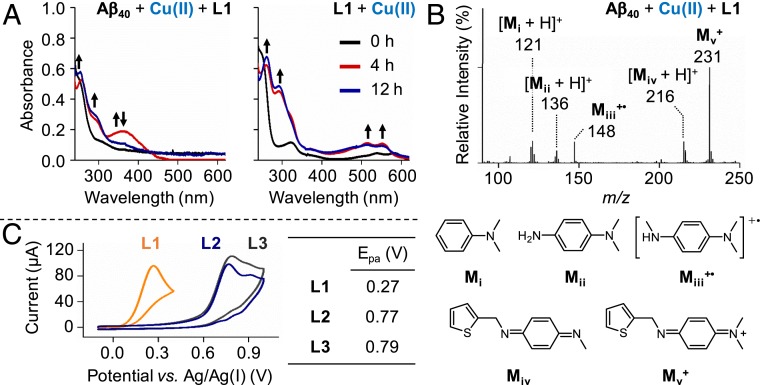Fig. 3.
Transformations and anodic peak potentials (Epa) of L1, L2, and L3. (A) Optical changes of L1 upon addition of Cu(II) with and without Aβ40 under aerobic conditions. The new appearance of the peaks is indicated with black arrows. Conditions were as follows: [Aβ40], 25 μM; [CuCl2], 25 μM; [compound], 50 μM; room temperature; incubation for 1 h (black), 4 h (red), and 12 h (blue). (B) Structural variations of L1 in the presence of Cu(II)-treated Aβ40, monitored by ESI–MS. Conditions were as follows: [Aβ40], 100 μM; [CuCl2], 100 μM; [L1], 500 μM; incubation for 1 h; 20 mM ammonium acetate, pH 7.2; 37 °C; no agitation. The sample was diluted with H2O by 10-fold prior to injection to the mass spectrometer. (C) Cyclic voltammograms of L1, L2, and L3 in DMSO at the scan rate of 250 mV/s. The Epa values of the compounds at various scan rates are summarized in SI Appendix, Table S2. Conditions were as follows: [compound], 1 mM; 0.1 M tetra-N-butylammonium perchlorate; room temperature; three electrodes composed of the glassy carbon working electrode, platinum counter electrode, and Ag/Ag(I) reference electrode.

